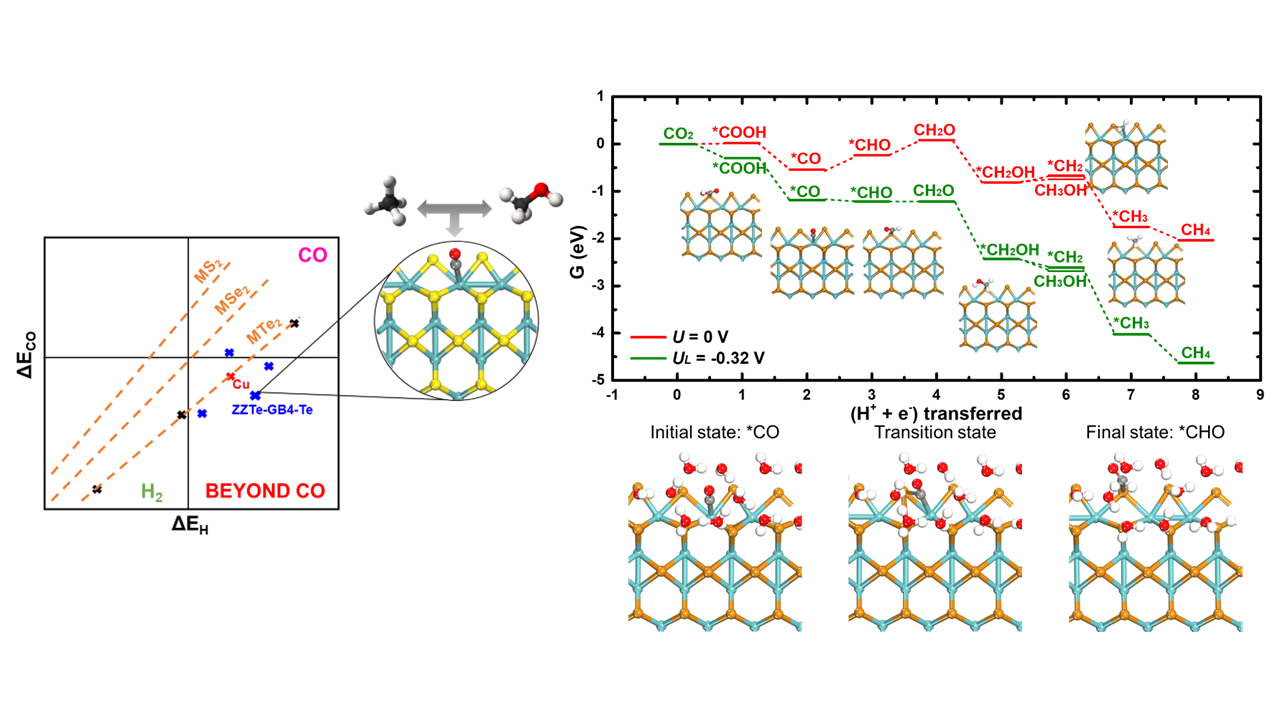Research
Electrochemical catalysis
One major challenge shared in the development of water splitting devices, regenerative fuel cells, and rechargeable metal-air batteries is finding suitable materials that can efficiently and stably catalyze the key electrochemical processes involved. However, an atomic scale understanding of the electrochemical interfaces and mechanisms of electron transfer and catalytic reactions at the interfaces remains limited. To address this problem, we develop and apply computational approaches based on density functional theory (DFT) and machine leaning (ML) to reveal the dynamic structure evolution of electrochemical interfaces under reaction conditions, and map out the reaction pathways of energy-related electrochemical reactions such as CO2RR, ORR, OER, and HER.

Neuromorphic computing
Neuromorphic computing is a new paradigm for computer architecture which mimic human brains, and is expected to be vastly more energy efficient than modern computers based on the von Neumann architecture. Strongly correlated quantum materials are considered to be ideal candidates for artificial neurons and synapses due to their pronounced non-linear properties through material phase transitions. However, standard DFT calculations struggle to treat such systems accurately due to large delocalization and self-interaction errors. Here we apply the many body quantum Monte Carlo (QMC) method to provide accurate predictions of structural, electronic, and magnetic properties of strongly correlated materials, and new insights into the mechanisms of their phase transitions.

Light harvesting
Solar light harvesting is an attractive means of energy utilization to help solve our global energy needs without depleting natural resources. Halide perovskites are an emerging family of materials in this field owing to their low-costs, high photoluminescence quantum yields, and broadly tunable optical properties. However, they possess very ionic surfaces capped with weakly bound and highly dynamic surface ligands, which presents significant issues for long-term stability. We use computational high-throughput screening (HTS) to search for ligands which provide effective passivation for surface traps, and anchoring motifs which promote energy transfer across the inorganic/organic interface.

Functional 2D materials
The edges of 2D materials, analogous to surfaces of bulk materials, exhibit unique properties from their basal plane. In addition to the pristine zigzag or armchair edges common to hexagonal 2D materials, reconstructed edges have many possible structures with significantly different electronic and magnetic properties. This could give rise to a wide continuum of functionalities which can be tuned by controlled synthesis. However, the whole chemical space of synthesizable reconstructed edges, and their functional properties remain poorly understood. In addition, currently no clear approach exists to provide actionable experimental guidance to synthesize the desired edges. We therefore develop computational frameworks to rapidly and efficiently predict synthesizable reconstructed edges in 2D materials, and collaborate with experimental groups to enable the closed-loop synthesis of these edges.
